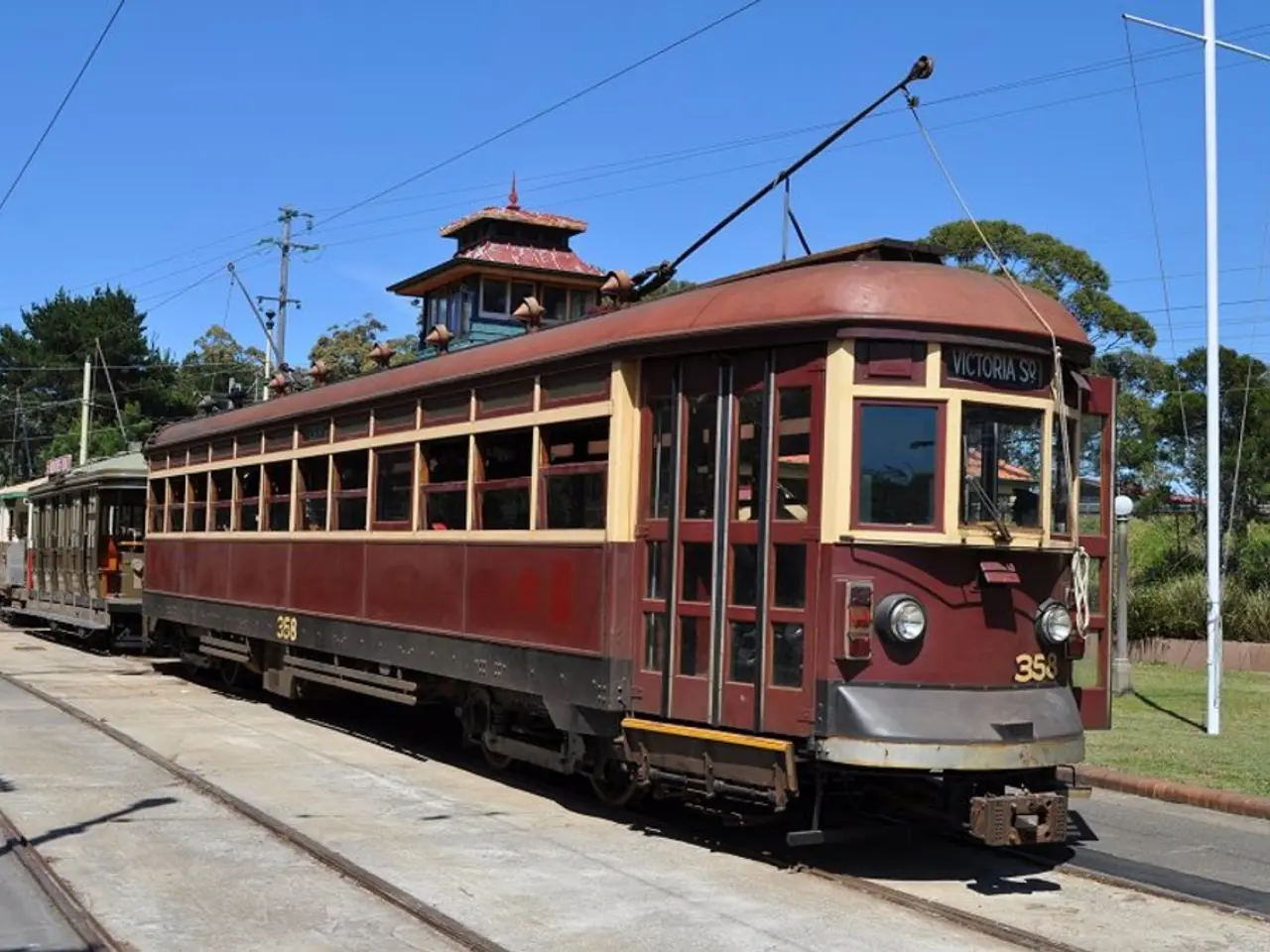High-Speed Trains' Onboard Gigabit Connectivity - Approaching Next Round of Test Trials - Train's Superfast Data Transmission - Test Phase Advances
Germany Aims to Bring Gigabit Internet to Trains with 5G Infrastructure
Mobile network providers in Germany are collaborating to bring high-speed internet to trains, with a focus on achieving gigabit connections for passengers. The project, named "Gigabit Innovation Track XT" (GINT XT), involves telecommunications companies o2 Telefónica, 1&1, Telekom, Vodafone, Ericsson, and infrastructure company Vantage Towers.
The tests are currently being carried out on a 12-kilometer regional railway stretch in Mecklenburg-Vorpommern, serving as a practical trial area for this technology. The test train, a rebuilt ICE, runs on diesel-electric power on the test track and is equipped with the standard ICE Wi-Fi, devices on the roof for mounting antennas, and permeable windows for mobile signal testing.
The goal of the project is to test mobile technology specifically developed for railway tracks and open to all network operators. The tests are primarily being conducted along the test track in the 3.6 gigahertz frequency band using the 5G standard. This frequency band, while offering high data rates, has a limited range of about one kilometer. To overcome this limitation, the project is also testing the combination of 3.6 gigahertz frequencies with lower range and lower frequencies with greater range.
If successful, the tests on this regional railway stretch could pave the way for further expansion. There is interest in expanding the GINT XT testing on the Hamburg-Berlin route, a major innovation corridor, once the technology proves successful in initial trials. However, implementation on this route depends on establishing a sustainable financing concept involving Deutsche Bahn, policymakers, and telecom companies. The project would require substantial investment due to the extensive infrastructure needed, with a new 5G mast almost every kilometer.
The initial purpose of the masts on the Hamburg-Berlin route is to enable the new FRMCS standard for future railway communication. If the tests in Mecklenburg are successful, the masts can also be used by mobile network operators to offer mobile internet with gigabit data rates in trains in the future.
In conclusion, Mecklenburg is currently included in early tests for gigabit internet on trains using new 5G infrastructure, and the Hamburg-Berlin route is planned as a potential next step when funding and technical readiness allow. This development could revolutionize train travel in Germany, offering passengers faster and more reliable internet connections.
[1] Deutsche Bahn (2022). Deutsche Bahn tests 5G for trains in Mecklenburg. Retrieved from https://www.db.de/en/pressereleases/archive/2022/deutsche-bahn-tests-5g-for-trains-in-mecklenburg.html
[2] Deutsche Bahn (2021). Deutsche Bahn tests 5G for trains in Mecklenburg. Retrieved from https://www.db.de/en/pressereleases/archive/2021/deutsche-bahn-tests-5g-for-trains-in-mecklenburg.html
- The Commission, in light of the success of the GINT XT project, has also been asked to submit a proposal for a directive on the protection of the environment, considering the deployment of thousands of 5G masts across the country.
- In addition to the tests on the Hamburg-Berlin route, the Commission is considering ventures in other sectors, such as the finance industry, public-transit, transportation, and data-and-cloud-computing, to leverage the advantages of 5G technology.
- To ensure a smooth and seamless transition to 5G technology in transportation, the Commission has collaborated with technology companies like Ericsson to develop industry-specific standards and solutions.




